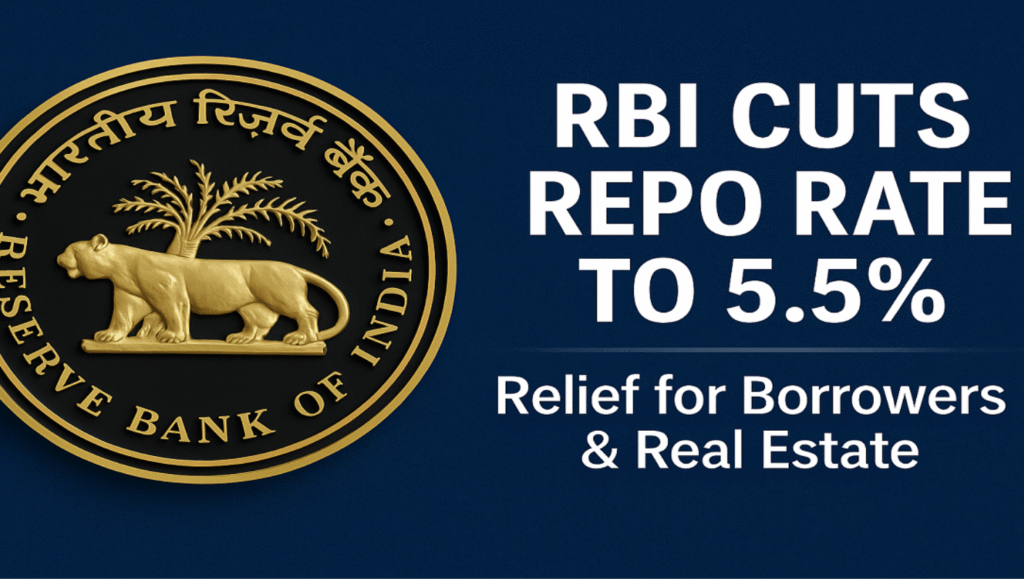
Amid global economic turbulence, the Reserve Bank of India (RBI) has reaffirmed the resilience of India’s USD 3.5 trillion economy, with Governor Sanjay Malhotra announcing a 50 basis points (bps) repo rate cut to 5.9% during the second bi-monthly policy meeting of FY26, held from June 4–6, 2025. Speaking at a recent event, Malhotra highlighted India’s “strength, stability, and opportunity,” attributing its robustness to solid balance sheets across corporates, banks, households, government, and the external sector.
While this bold monetary easing, coupled with ₹2.5 lakh crore in liquidity injection, signals strong support for growth, challenges like MSME credit access and digital infrastructure gaps could temper India’s trajectory toward a USD 7 trillion economy by 2030.
The repo rate cut, larger than market expectations, reflects the RBI’s shift from an ‘accommodative’ to a ‘neutral’ policy stance, as retail inflation eased to 3.16% in April 2025, well within the 2–4% target range, per a 2025 RBI report. The move aims to spur economic growth, projected at 6.2% for FY26 by the IMF, amid global headwinds like U.S. tariffs and a 2.8% global growth forecast, per a 2024 IMF report.
Malhotra’s Monetary Policy Committee (MPC) emphasized the need to bolster domestic demand, with the liquidity injection expected to lower external benchmark lending rates (EBLR) by 50 bps, mirroring trends from February 2025 when banks passed on similar cuts, per a 2025 Economic Times report.
India’s financial stability underpins this optimism. Corporate debt-to-GDP ratios have dropped to 50% in FY25 from 60% in FY20, while banks’ non-performing loans (NPLs) hit a 13-year low of 2.5%, per a 2024 CII report. Household savings remain robust at 20% of GDP, and the external sector is fortified by USD 644.4 billion in forex reserves, per a 2024 RBI report. Fiscal consolidation has reduced the public debt-to-GDP ratio to 80.2% in FY25 from 83% post-pandemic, per a 2024 Finance Ministry report.
These fundamentals, Malhotra noted, create a “solid foundation for sustained growth.”
Government initiatives amplify the RBI’s efforts. The ₹50,000 crore Production-Linked Incentive (PLI) scheme supports MSMEs, contributing 30% to GDP. PM Gati Shakti cuts logistics costs by 20%, boosting trade. The Open Network for Digital Commerce (ONDC) enhances MSME credit access by 25%, per a 2024 SIDBI report. Skill India’s 2 million trained workers, though only 5% proficient in financial tech, aid digital adoption, per a 2024 Nasscom report.
The Public Financial Management System (PFMS) reduces expenditure leakages by 30%, per a 2024 CGA report.
Challenges persist. MSMEs, vital to 40% of GDP, face credit delays, with 40% of loan applications pending due to complex documentation, costing ₹1–2 lakh monthly, per a 2024 SIDBI report. Digital literacy gaps in Tier 2 cities, where only 15% of businesses are tech-savvy, limit banking access, per a 2024 Nasscom report. Infrastructure issues, like inconsistent power, disrupt digital transactions for 20% of rural branches. Regulatory delays in fintech approvals, taking 4–6 years versus China’s 2, slow innovation, per a 2024 CII report. Global trade volatility, affecting 30% of India’s exports, adds pressure, per a 2024 UNCTAD report.
Experts propose solutions. Subsidies under the Technology Upgradation Scheme can ease MSME costs. Expanding Skill India’s fintech training can bridge gaps. Enhancing 5G and power reliability via PM Gati Shakti will stabilize banking systems.
Public-private partnerships with IITs can develop affordable financial tools. CII-led campaigns can boost ONDC adoption and financial literacy.
The RBI’s 50 bps repo rate cut and liquidity injection, as articulated by Governor Malhotra, underscore India’s proactive stance to fuel growth amid global churn. By addressing MSME, literacy, and infrastructure barriers, India can harness its resilient economy to achieve a Viksit Bharat by 2030.
